Photographs by the author. Formatting by Jacqueline Banerjee. You may use these images without prior permission for any scholarly or educational purpose as long as you (1) credit the photographer and (2) link your document to this URL in a web document or cite the Victorian Web in a print one. [Click on the images to enlarge them.]

St Anthony’s Hall seen from the south across Peaseholme Green.
The Blue Coat School was established in medieval St Anthony’s Hall in 1705. As numbers grew, it received an extension to the northeast by J. B. and W. Atkinson in 1870, and to the northwest by Demaine & Brierley in 1887 and 1901. This latest work is seen to the left of the medieval building, and is entered from Aldwark. The buildings were vacated by the school in 1946, were used by the Borthwick Institute of the University of York for some decades, and were eventually taken by the York Archaeological Trust in 2006. The view above shows the Aldwark frontage on the left, then the long side of the medieval hall; to the right are two entrances to a quiet but public garden and to the former stable (now a restaurant).


Left: Carved slab (erected in 1996) near one entrance to the garden depicting Blue and Grey Coat children. There is no information about any girls’ school in York. Right: The school was contained in this building till the 1870s.
The medieval building uses stone on the ground floor on the Aldwark side, but elsewhere uses bricks, narrower than those in, say, the Atkinson wing. These would be bricks of the seventeenth or eighteenth century, as is the moulding framing the windows, and the oval oculus in the main gable. The modern buildings are in broader bricks and have slate roofs. The whole medieval building was eventually used by the school, with classes in the first-floor hall, dormitories in the side rooms, and other uses of the ground floor. At present the medieval St Anthony’s Hall is used by the Quilters’ Guild and Trinity Church.
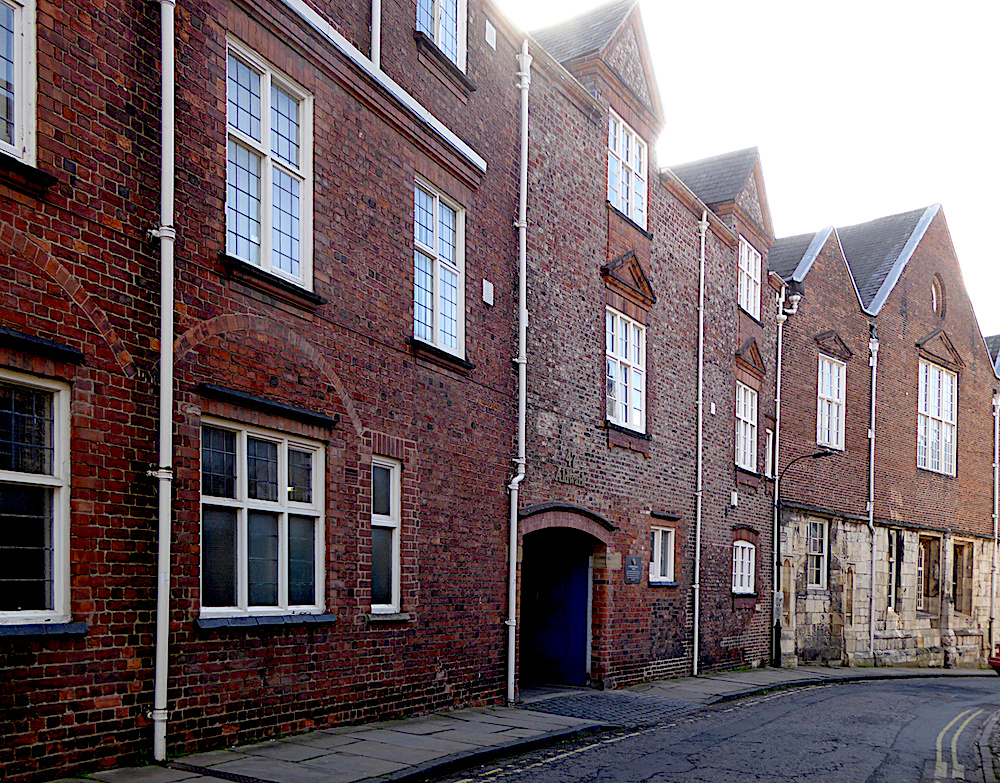
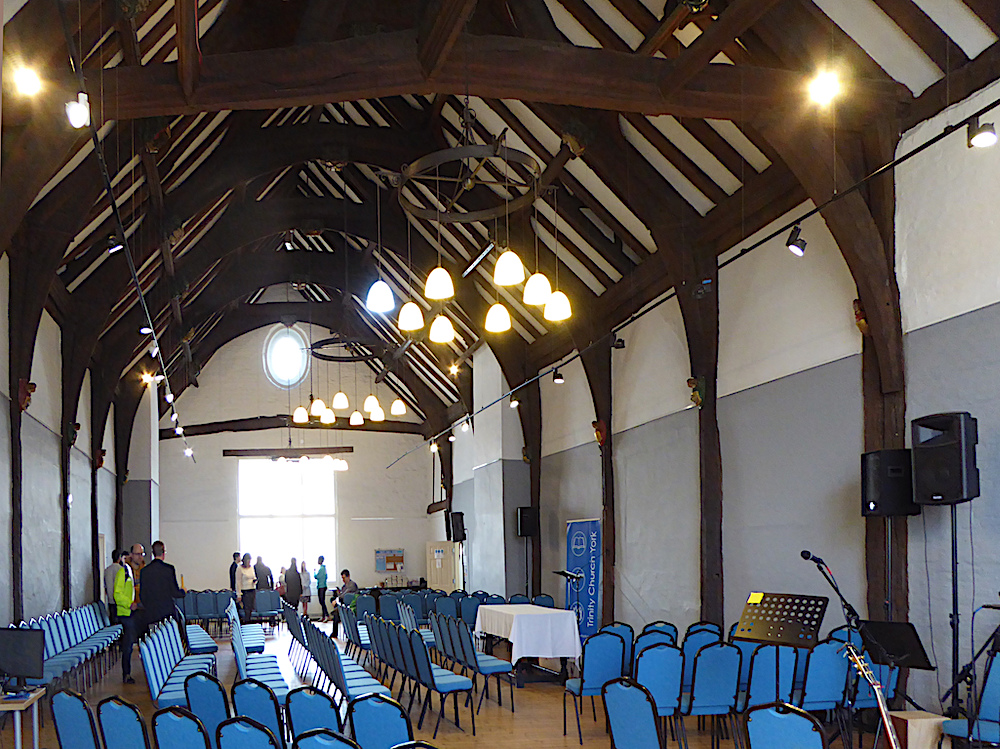
Left: The south-west frontage on Aldwark, showing several later phases of building. Right: An interior view of the first floor of St Anthony’s Hall. There are smaller rooms in the "aisle" parallel to the hall.
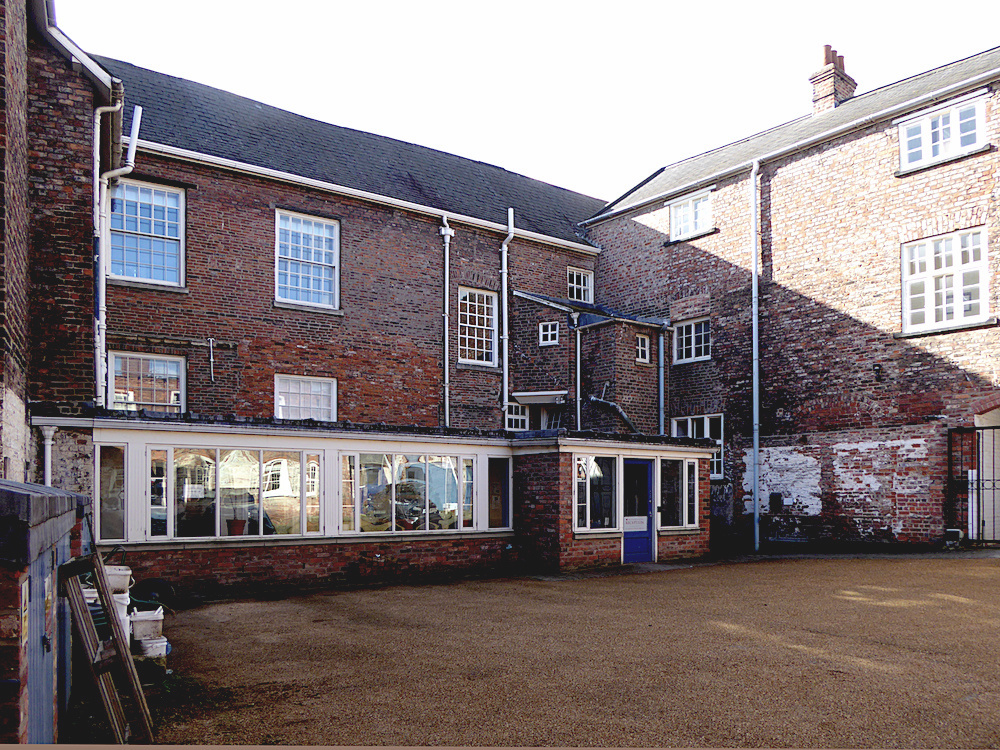
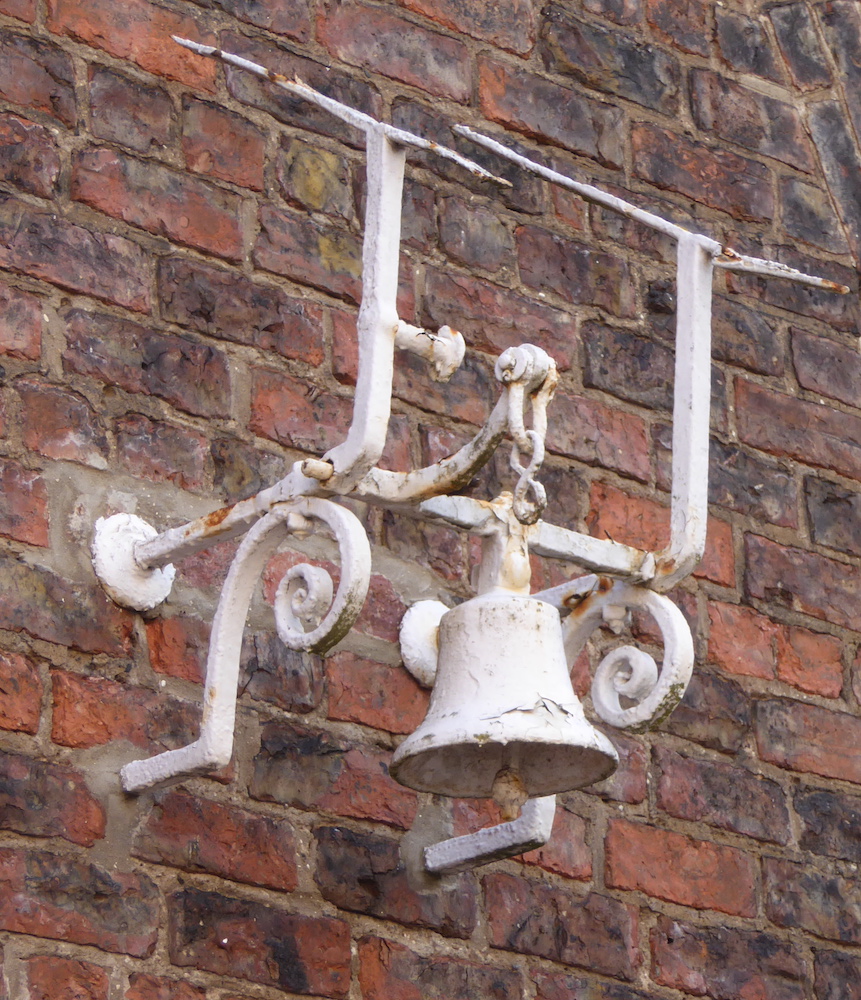
Left: The courtyard entered off Aldwark. This square grouping of buildings encloses a courtyard now used as a car-park. These later buildings house the headquarters of the York Archaeological Trust. A single-storey addition has been attached to the medieval building on this southeast side of the courtyard. Right: On the wall of the Atkinson addition (1870) are the remains of a bell. The complete fitting would have been sheltered by a small sloping roof for which only metal supports remain. The bell would have been rung by someone standing below and holding a separate rod with a hook that fitted into the "8" iron loop, thus swinging the bell with the bar to which it was fixed. Presumably this area was then a paved playground or assembly area for the boys.
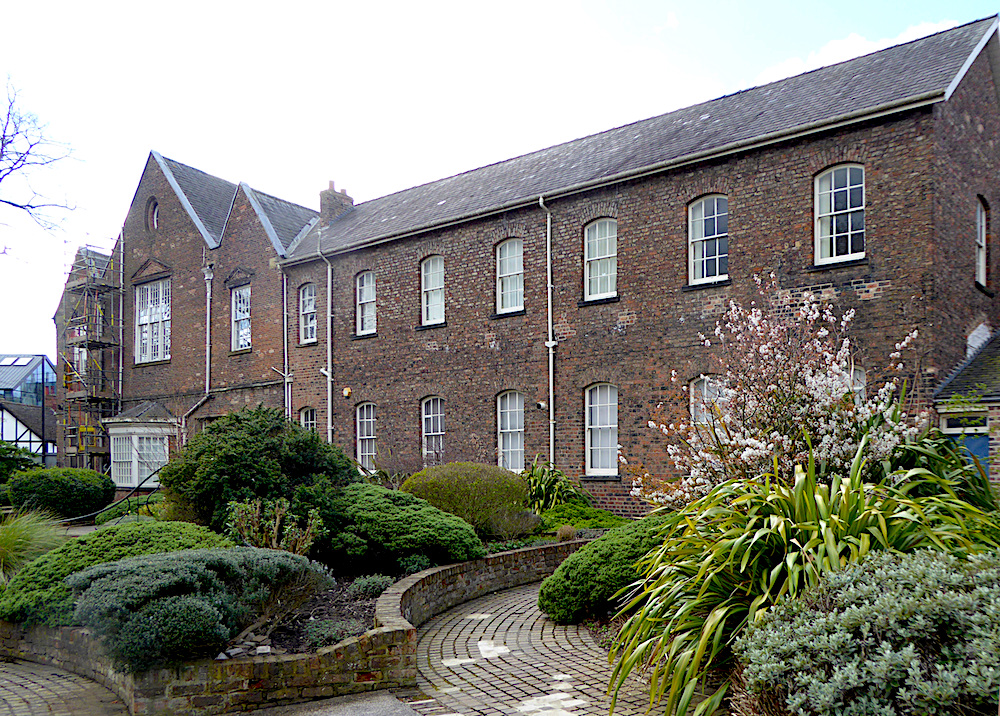
Left: The 1870s addition by the Atkinson brothers seen from the garden. The change in the size of bricks can be seen in close-up, here.
There is a larger area of open ground to the northeast of the buildings. The medieval hall is end-on to this land, with the Atkinson wing extending the frontage seven bays to the north-west. The exterior of the buildings has not been changed much, but the grounds to the northeast have been unified up to the medieval city walls, and were landscaped by the York Civic Trust in 2009 to form a secluded public garden.
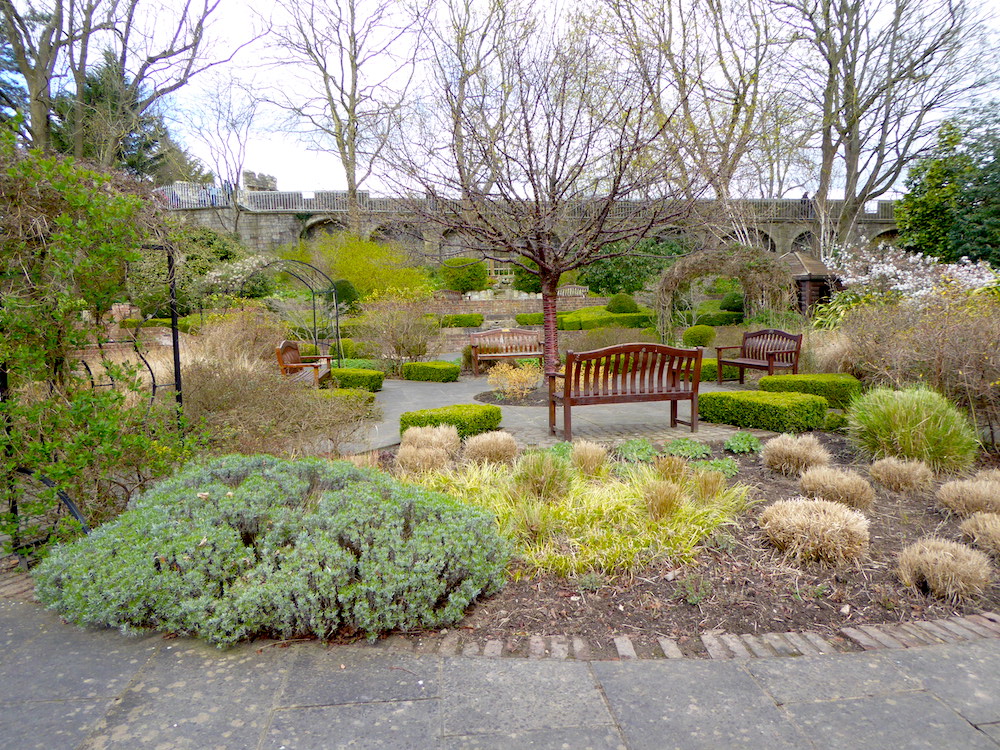
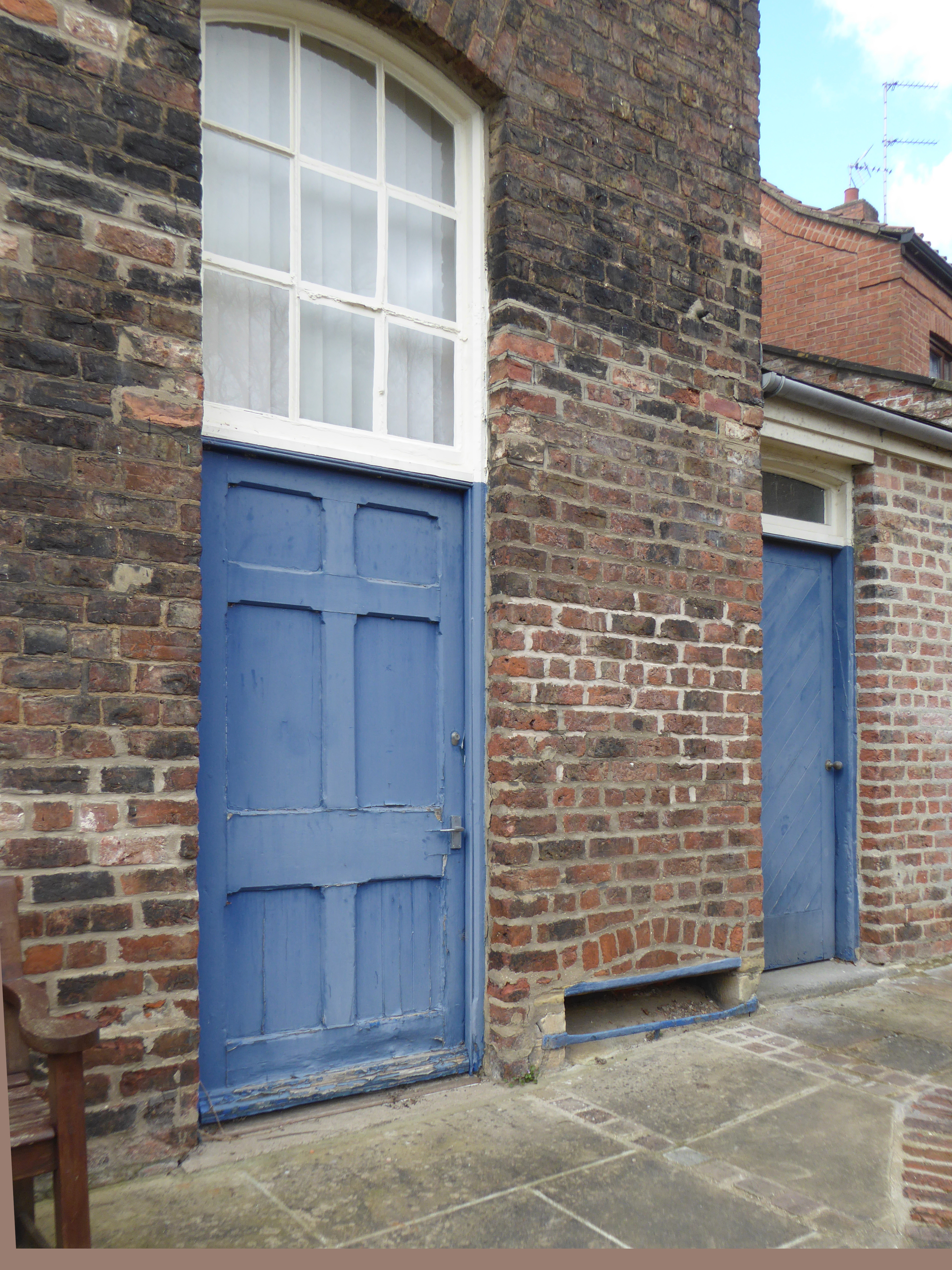
Left: The public garden. Right: One of the extra-long boot-scrapers located at each door.
The Blue Coat School had most of this land, using it for playground or perhaps growing some food or fruit trees; on the far side from the main buildings are outbuildings and the former stable. This side of the building led to the stable, and the area is named as a playground on a 19th-century map (OS Town Plan, 1891, Yorkshire CLXXIV.6.20; scale 1:500).
Bibliography
St Anthony's Hall. An Inventory of the Historical Monuments in City of York. Vol. 5: Central. British History Online. Web. 15 May 2023.
Created 15 May 2023